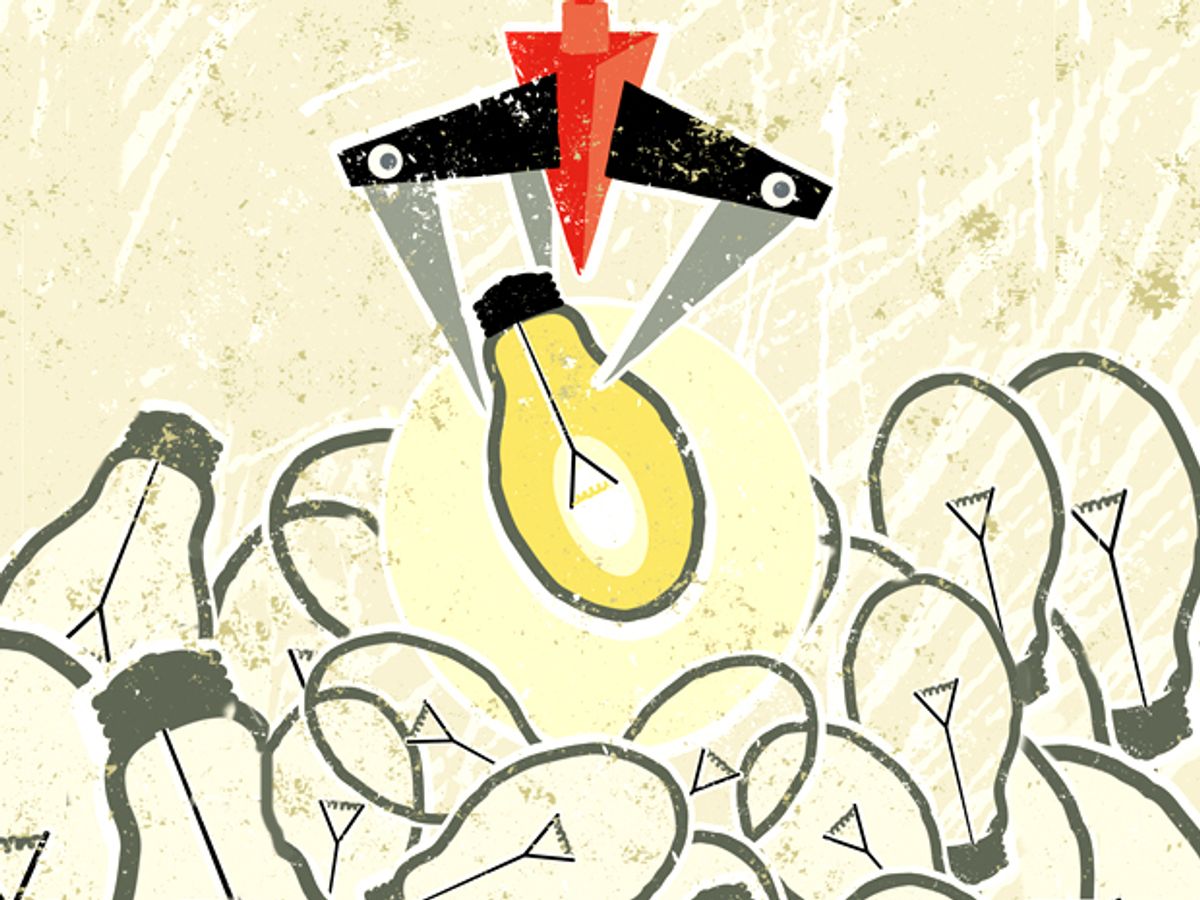Among the primary reasons that innovation in electricity grid technologies tends to move slowly is that the grid makes for a poor test site: You can't bring it down to try something out. So, instead, here's a thought experiment: If you could bring the whole thing down and start over from scratch, what would you do? What technologies in use today would be scrapped or downscaled, and which ones would we implement from the outset? A panel of experts—hosted by EnergyWise contributor Katherine Tweed—at the Advanced Research Projects Agency—Energy (ARPA-E) Energy Innovation Summit laid out some ideas on Monday.
"Power engineering is not rocket science. It's much more important than that," said Terry Boston, the CEO of grid operator PJM Interconnection, citing the one-day 2003 Northeast blackout and its $6 billion price tag. He started out by saying that Thomas Edison was right—high voltage, direct current is probably the way to go if we're starting our grid anew, instead of the alternating current that dominates the American grid. Beyond that, standardization is a crucial component that is sorely lacking from today's grid.
"We tend to use 23 different communication standards in our industry," said Clark Gellings, a fellow at the Electric Power Research Institute. Ideally, every node on every corner of the grid should be able to communicate with every centralized generation facility and all the substations and other nodes between them. "We talk about a common information model," Gellings said. "That's a wonderful idea, but we're not deploying it."
Another idealized grid characteristic is in fact happening incrementally as we speak: a balance of distributed generation, like rooftop solar panels, with the big bulk generators such as natural gas plants and utility-scale solar and wind. Today we talk about creating microgrids that, while connecting to the main grid, can function somewhat independently; if this sort of combined form of generation and distribution were implemented from the beginning, there is a good chance that the resilience of the grid—meaning, its ability to bounce back from disasters like, say, Hurricane Sandy—would improve dramatically. Adding electricity storage capability, from the large-scale options like compressed air or big battery arrays on down to even the household or smart-appliance level, would eliminate some of the problems the grid has with dispatching power where and when its needed.
Along with some of those tech fixes, Lawrence Jones, the vice president of utility innovations and infrastructure resilience at Alstom Grid, said we should first determine precisely what we want this magically regenerated grid to do. Since reliability in the face of natural disaster is always among the foremost concerns when it comes to the grid, putting all transmission underground might be a reasonable idea. (This thought experiment now rests firmly outside the bounds of economic and logistical confines, of course.) "The physical things in the world that affect the grid... extreme weather, hotter and colder temperatures—these are things that we haven't designed for," Jones said. "I think it needs to be an anticipatory design strategy."
So if Santa brought us a new grid, it would use HVDC, incorporate renewables and storage at all scales, focus on resilience issues that would allow it to recover from insult, and feature standardized protocols allowing smooth communication from top to bottom. Some of these goals are on their way into our actual grid, but the uptake is slow, and others appear to be a bit of a pipe dream. But John Hewa, the CEO of Pedernales Electric Cooperative in Texas, pointed out that this sort of dreaming isn't coming from a place of utter poverty: "It's a system that is achieving nearly four nines of reliability in some parts of the country." That is, it is functioning just fine nearly 99.99 percent of the time. Maybe we don't need to build from the ground up after all.
Dave Levitan is the science writer for FactCheck.org, where he investigates the false and misleading claims about science that U.S. politicians occasionally make.



